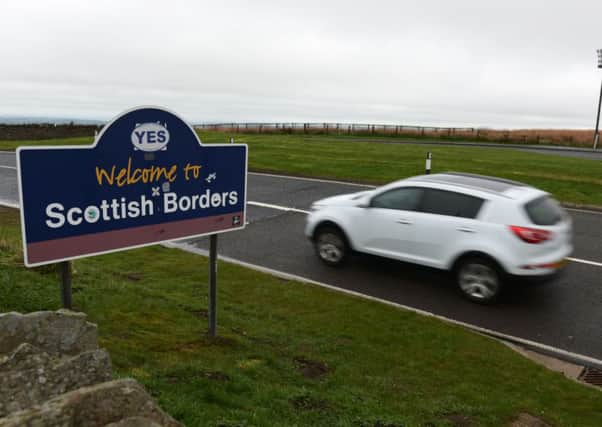Expats ‘moving back from rUK before referendum’


The economic revival is believed to be behind the surge, although it may also be down to some expats returning home to vote in the referendum.
The net rise in people coming from England, Wales and Northern Ireland reached almost 8,000 last year, up from 3,000 the year before.
Advertisement
Hide AdAdvertisement
Hide AdBut immigration from overseas has sunk to the lowest level in a decade following the economic decline of recent years.
Scotland’s overall net migration fell below 10,000 in 2012-13 and will have to more than double to reach the 24,000 First Minister Alex Salmond wants to achieve after independence.
Scotland’s population is continuing to rise and reached a record high of 5.33 million last year, official figures from the National Records for Scotland have revealed.
But the rate of growth is falling as the country’s birth rate continues to plunge. There were 56,014 babies born in Scotland, which is down 2,013 – the fifth year in a row that the numbers have dropped.
Professor Robert Wright, a demographics expert at Strathclyde University, suggested the economic recovery could be drawing people from the rest of the UK to move to Scotland.
“When an economy is in recession, migration grinds to a halt,” he said. “Now this is just an idea, but it could be a sign that the economy is improving, although that can’t be proven.”
A total of 47,685 moved to Scotland from the rest of the UK last year, an annual rise of 2,500. With just 39,823 Scots going the other way, it resulted in a net increase of 7,862. The number of overall migrants coming to Scotland fell to 75,885 last year, the lowest in more than a decade.
But the number of Scots going overseas has also dropped to 65,923. It leaves 9,962 in net migration. This falls well below the 24,000 Mr Salmond wants after independence to ensure the workforce is big enough to pay the taxes needed to fund the NHS and social services.
Advertisement
Hide AdAdvertisement
Hide AdThis is coupled with a falling birth rate in Scotland, which Prof Wright said was also down to the squeeze in family budgets.
He added: “Fertility is pro-cyclical. When the economic times are good, fertility goes up. When the economic times are bad, fertility goes down.”
The crucial group of 20- to 59-year-olds which will provide Scotland’s workforce is seeing “no, slow or negative” growth, according to the academic.
He said: “You want to try to keep that group growing and providing the public sector and private sector with the labour it needs. We need higher economic growth to pay for the ageing population. If we don’t have this growth, we don’t have a tax revenue and the standard living of older people will fall. That’s political suicide.”
The surge in the number of Polish people moving to Scotland in recent years is borne out in the statistics. There are now 55,000 Poles in Scotland, the highest of any immigrant group.
This is more than double the number of people from India and the Republic of Ireland, who each number around 23,000.
Edinburgh is set to bear the brunt of housing pressures in the future. The capital faces an expected 39 per cent rise in the number of households by 2037, while Aberdeen is set to grow by 35 per cent. By contrast, Inverclyde is facing a fall of 10 per cent in its household numbers.